ESP RENAISSANCE Power Cord & RENAISSANCE Power Distributor by Bill Wells
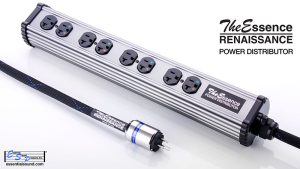
 Over many years of visiting numerous exhibits at various high-end audio shows, often the first thing I typically notice and tend to focus on are the speakers. I also fully appreciate the supporting cast of components, including electronics and equipment racks. However, the array of cabling required to connect everything is often overlooked. This includes AC power cords and companion power conditioners. And as we all know, without these cables – essentially nothing happens.
Over many years of visiting numerous exhibits at various high-end audio shows, often the first thing I typically notice and tend to focus on are the speakers. I also fully appreciate the supporting cast of components, including electronics and equipment racks. However, the array of cabling required to connect everything is often overlooked. This includes AC power cords and companion power conditioners. And as we all know, without these cables – essentially nothing happens.
Also, over many years, I’ve had several opportunities to audition and evaluate different brands of power cables, power conditioners, and power strips. The subject of this review is the Essence RENAISSANCE Power cord and Power Distributor, designed and developed by Michael Griffin, founder, and chief technical guru for his company named Essential Sound Products (ESP). As an FYI, Michael has been developing a variety of highly effective power cords and power distributors for quite some time, with prices ranging from a few hundred dollars per power cord to several thousand dollars.
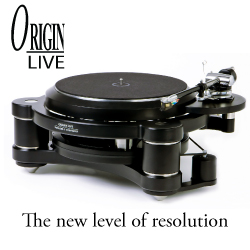 During extended interviews with Michael, during audio shows, as well as phone calls, emails, and virtual sessions (i.e., Zoom), I’ve learned quite a bit regarding his background and how he came into the high-end audio sector as part of his pursuit in making a better power cord. Just to get started, here are a few questions that I posed to Michael specifically for the purpose of him sharing some of his philosophy as well as the technical aspects of his designs:
During extended interviews with Michael, during audio shows, as well as phone calls, emails, and virtual sessions (i.e., Zoom), I’ve learned quite a bit regarding his background and how he came into the high-end audio sector as part of his pursuit in making a better power cord. Just to get started, here are a few questions that I posed to Michael specifically for the purpose of him sharing some of his philosophy as well as the technical aspects of his designs:
Question: Please share your professional background and what inspired you to pursue high-end audio, specifically designing and developing power cords.
Response: My interest in power cords was sparked by comparing CD sound vs. vinyl in the early 1990’s. At that time – I tried a power cord made using a 14-gauge Romex with a hand-terminated plug and an IEC connector. Compared to the stock 18-gauge cord, it significantly changed the sound. From that experiment, I quickly became aware that changing the power cord affected the component’s performance. I then started making different power cords. Many years later, and as my power cords evolved, I had the opportunity and good fortune to provide a set of my top power cords to a manufacturer during winter CES with outstanding results.
That event generated lots of positive feedback, including a demand for my power cords. As my research continued, I became even more aware that manipulating the power cord’s electrical properties could directly impact the performance of the connected component’s energy storage devices, such as the transformer and capacitors. That’s basically how my company, Essential Sounds Products (ESP), was started. Regarding my educational and professional background, I have a Bachelor of Science degree in mechanical engineering and graduate studies in electrical engineering. I also worked in the automotive industry throughout my career, specifically in very technical areas of the business.
Question: What is your overall design philosophy regarding power cords?
Response: Based on extensive experience, when properly designed, the power cord has a greater positive impact on an audio component’s performance and resulting sound quality than any other cable. In fact, the power cord’s effect is direct and foundational. It literally impacts the entire “performance envelope” of the component, including dynamics, transient speed, frequency extension, midrange smoothness or fatigue-free quality, soundstage imaging, and resolution.
Question: What were your primary goals for upgrading your existing product line of very successful power cords to your new flagship RENAISSANCE model? Also, what types of technological advances have you incorporated into your new flagship power cords?
Response: Our approach has been to use a smaller conductor size to take advantage of its faster transient current flow characteristics. Then, we add conductors in parallel to increase the cable’s overall current capacity. This cable geometry earned a US patent. Over the years, we have modified the geometry to improve performance and optimize it for different applications. In terms of the newer Essence Renaissance power cords – this design represents a departure from all previous generations and is based upon a new, advanced, patented geometry. As such, we named this latest version the Essence Renaissance because it marks a new beginning. Effectively, it establishes a new baseline or foundation for making improvements to our entire power cord line.
Question: What are your overall goals for continually advancing your power cords? To reach these goals, what types of innovation and technological development must occur?
Response: We have to be aware of and understand the implications of new power supply designs, what they need in terms of current delivery, and how our power cord products can optimize their performance. In actuality, we are not listening to a power cord but rather how well the component performs when our power cord is connected to it.
Question: What is the true secret sauce for your power cables? What makes them unique?
Response: We approach our design and development efforts first from an engineering perspective, then art. Second, we back up our claims of improved performance with objective tests and measurement data. Particularly important is our experience with feedback from musicians and recording professionals who use our products to make or record live music, respectively. The fact that music creators and recording professionals embrace our power cords is a validation that our products enhance fidelity (accuracy) without adding coloration. The lack of coloration is another reason our power cords are so versatile.
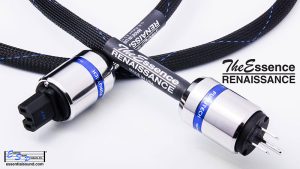
Product Description – Renaissance Power Cord and Power Distributor
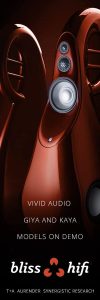 The Essence RENAISSANCE power cord is a sixth-generation product representing a major design iteration, including a significant change in cable geometry and cryogenic treatment. Additionally, the termination process and choice of connectors are new. Further refinements are included and are covered by a different patent. The companion Essence Renaissance Power Distributor provides up to eight components being plugged into it. This unit also affords circuit protection through surge protection and a fast-blow ceramic body fuse.
The Essence RENAISSANCE power cord is a sixth-generation product representing a major design iteration, including a significant change in cable geometry and cryogenic treatment. Additionally, the termination process and choice of connectors are new. Further refinements are included and are covered by a different patent. The companion Essence Renaissance Power Distributor provides up to eight components being plugged into it. This unit also affords circuit protection through surge protection and a fast-blow ceramic body fuse.
Additionally, a custom-designed multi-conductor shielded cable is employed to maintain the electrical properties of the power cord. The conductors are the same gauge as used in the power cord. Wiring and outlets are all cryogenically treated, and much attention is paid to the mechanical aspects of the Power Distributor.
Beyond this, any circuit vibration compromises an audio component’s clarity and resolution. For the purpose of addressing either structure-borne or airborne vibrations, according to Michael, the chassis is made very rigid by the use of extruded aluminum sections in a cylindrical shape with flutes so that the wall thickness constantly varies. This geometry minimizes potential resonances. The internal wiring is isolated from the chassis by acoustic treatment. Lastly, the Power Distributor is filled with a proprietary damping material, again to absorb any residual vibrations. The Essence Renaissance Power Distributor is designed to be the perfect complement, extending and not compromising the performance of the power cords. Each connected component will benefit from the power conditioning afforded by the hard-wired Renaissance power cord.
Early Break-in and listening
Several weeks after a long and very informative conversation with Michael, I was pleased to receive a notification indicating that the products would soon be shipped to my home. And with the arrival shortly after that, I was anxious to get started. A quick inspection revealed a professional, high-quality appearance for both the power cords and distributor. This was accompanied by a message that I should provide adequate time for these products to properly burn in and not expect any earth-shattering change or sonic improvement with the initial installation of the Renaissance power cords and its companion power distributor. Having been reviewing high-end audio equipment for quite some time – I took a deep breath. I followed my usual practice of allowing continuous music signals to flow through these products for several days as they settled in and fully acclimated to my system.
Michael further explained that my component’s power supplies, particularly the capacitors, would adjust to the effect of these new power cords. After approximately three or four days of continuous burn-in, I briefly listened and felt the sound was starting to provide a glimpse of things to come. This included noticeable changes with the midrange and upper frequencies opening up. As the break-in continued, the overall sonic performance brought a fuller, organic texture to both musical instruments and voices with excellent resolution and refinement. Bass frequencies had more of a naturally dynamic push with solid control and improved articulation. As discussed during the earlier interview with Michael, the power cords would require sufficient time to fully mate with the power supplies of each component connected and for synergy to occur.
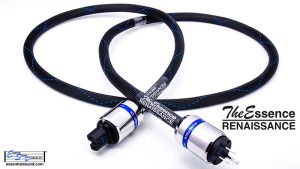
Critical Listening, Assessment, and Evaluation
As part of my process for assessing the overall effectiveness of the Essence Renaissance power cords, I made an effort to minimize any changes in my reference system and to provide a stable platform for which I could objectively (and subjectively) evaluate the impact of these new products.
Fortunately, the additional burn-in time helped me appreciate the positive impact these power cords and power distributor were making in my system. Not only did I find these products effective, they were now quite outstanding. Specifically, I found these power cords sonically neutral, uncolored, and with no apparent flavor. Bass extension, power, control, and detail came through very convincingly. Lower frequencies were also robust, full, solid, and tighter, with good control, resulting in no apparent overhang. Through my system, the bass provided not only quantity but also a higher qualitative level of performance that was quite apparent and very satisfying. With excellent articulation, the bass’s dynamic power and organic flow were enhanced overall.
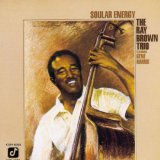
This was also when the real fun began and as I started to focus my attention on some of my favorite recordings. In particular, with the truly outstanding Vivid Audio speakers in place (i.e., Kaya 90 and Giya 2 Series 3), upping the ante in bass performance was an absolute sonic pleasure. Both pairs of these speakers are superb and noticeably revealing across the entire frequency spectrum, as well as in the lower frequencies where anything ahead of them becomes quite evident. With the ESP Renaissance power cords and power strip in place – the overall tonal quality of the bass was magical. An excellent example is on full display when listening to the ever-so-wonderful acoustic bass master Ray Brown on his highly recognized Soular Energy recording. In particular, check out the Sweet Georgia Brown selection to appreciate how an acoustic bass instrument should sound in a jazz trio format. Gene Harris’s piano sings oh so distinctly in this recording – something I attribute again to the power cords under review.
 Another excellent example of the purity of how acoustic bass is rendered along with clarity within the midrange is Keith Jarrett’s recording titled The Out of Towners. Gary Peacock’s bass playing and the stellar textural shading of Jarrett’s wonderful piano playing are exemplary. In fact – when the sound is right, it just doesn’t get any better than this. Again, kudos to the Renaissance power cords and power distributor for providing the type of quality AC to make this so evident. Not only was I able to easily observe the true sonic character of these two different acoustic instruments, but the Renaissance power devices also helped to bring forth subtle sonic qualities that often go unnoticed. Beyond this – the power and beauty of the piano and bass were on par with some of the best I’ve heard in my system and elsewhere.
Another excellent example of the purity of how acoustic bass is rendered along with clarity within the midrange is Keith Jarrett’s recording titled The Out of Towners. Gary Peacock’s bass playing and the stellar textural shading of Jarrett’s wonderful piano playing are exemplary. In fact – when the sound is right, it just doesn’t get any better than this. Again, kudos to the Renaissance power cords and power distributor for providing the type of quality AC to make this so evident. Not only was I able to easily observe the true sonic character of these two different acoustic instruments, but the Renaissance power devices also helped to bring forth subtle sonic qualities that often go unnoticed. Beyond this – the power and beauty of the piano and bass were on par with some of the best I’ve heard in my system and elsewhere.
Moving to more in the critical midrange and higher frequencies – the positive effect of the Renaissance power devices continued to provide sterling results. In the true sense of the saying, there was just more there with these power devices in place. The midrange was superbly open, clear, and transparent, and, at the same time, had a natural organic quality that allowed both instruments and voices to emerge in a compelling and realistic manner. Beyond this, upper midrange and into the higher frequencies – the sound possessed an easy, effortless quality that seemed to float. Along with this, there was no brightness or edginess to transients that were spot-on and quick on both leading and trailing edges. With the cables in place, the net effect of these wonderful sonic attributes allowed me to hear deeper into the music and more fully appreciate the revealing of subtle nuances that add realism to the music. My system was already at a very high level of expression. With the ESP Renaissance power cords and power distributor in place, I felt the overall level of sonic performance had been enhanced.
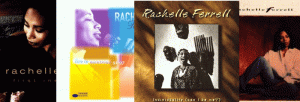 Listening to both male and female vocals easily allowed me to hear the true character of their voice and easily discern the stylistic nuances of their performances. For example – Giacomo Gates has a very distinctive jazzy quality and tone. Listening to his rendering of the classic jazz selection titled Centerpiece and his recording titled Centerpiece, one can see that his classy style and manner of expression are clearly revealed. Or, for an R&B singer with a set of chops extraordinaire, check out Rachelle Ferrell on her recording titled Individuality. As folks would say – this lady can blow, and her vocal stylings and incredible range are amazing. Moving beyond these two vocal artists and on to various instruments – whether wind instruments including sax, trumpet, etc., or various types of percussion – I felt a consistently high level of clarity overall that resulted from the ESP Renaissance power devices being in my system.
Listening to both male and female vocals easily allowed me to hear the true character of their voice and easily discern the stylistic nuances of their performances. For example – Giacomo Gates has a very distinctive jazzy quality and tone. Listening to his rendering of the classic jazz selection titled Centerpiece and his recording titled Centerpiece, one can see that his classy style and manner of expression are clearly revealed. Or, for an R&B singer with a set of chops extraordinaire, check out Rachelle Ferrell on her recording titled Individuality. As folks would say – this lady can blow, and her vocal stylings and incredible range are amazing. Moving beyond these two vocal artists and on to various instruments – whether wind instruments including sax, trumpet, etc., or various types of percussion – I felt a consistently high level of clarity overall that resulted from the ESP Renaissance power devices being in my system.
Additionally, I could observe how the soundstage was open, as I could imagine, and the boundaries of the walls of my listening room, front and side, seemed even less noticeable. Again, the ESP Renaissance power cords allowed my system to perform at a higher level, enhancing the overall stage dimensions by seemingly creating greater width, depth, and height. As a result of the cumulative effect of these enhancements – I found myself enjoying many of my favorite recordings along with various newer recordings that I was unfamiliar with, including numerous selections recommended by friends who are primarily music lovers vs. audiophiles. For the most part – my focus was mainly instrumental acoustic jazz, including traditional, classic, and contemporary styles. Additionally, vocals, both male and female, were included as well. From my observations, with the Renaissance power cords in place – there was a purity of the sound that raised the sonic integrity of all performers and their respective performances.
Final Thoughts
Michael Griffin, founder and chief technical guru, has done it again, this time with the introduction of his newer technological advancements embedded with a newer, upgraded model called the Essence Renaissance Power Cables and Power Distributor. With this latest design, ESP has stepped up its game and produced a product for serious consideration. With these products in my system, I achieved an excellent authentic and natural musicality with heightened listening pleasure—an awe-inspiring achievement and highly recommended.


Specifications:
Essential Sound Products
Renaissance Power Cords, 1.5 meter including standard connector – $4,999
Renaissance Power Distributor including 2-meter hard-wired power cord – $6,999
President: Michael Griffin
Address: PO Box 81998, Rochester, MI 48303
Tel: 248-375-2655, Fax: 248-375-2701
Web site: https:www.essentialsound.com
E-mail: info@essentialsound.com
Bill Wells Associated Equipment
Amplification & Digital Playback System
Bel Canto Design – Black System: ASC2 Asynchronous Stream Controller (line stage/rendered) and MPS1 Power Stream units (monoblock amplifiers w/internal DACs)
Tidal and Qobuz – Hi Rez streaming services
Loudspeakers
Vivid Audio Kaya 90
Vivid Audio Giya 3 Series 2
Cabling
Fiber Optic – interconnection links
Cardas Audio – Clear Beyond XL power cords and speaker cables
Silver Smith Audio – Fidelium speaker cables
Accessories
Cardas Nautilus AC power strip
Furtech NCF Nano AC receptacles
Matrix Systems equipment rack
Shakti Hallographs
Synergistic Research – FEQ Frequency Equalizer, Black Box, and HFT’s
Townsend Audio Seismic Podiums and Isolation Pods
Ultra Resolution Technologies – isolation base
Stereo Times Masthead
Publisher/Founder
Clement Perry
Editor
Dave Thomas
Senior Editors
Frank Alles, Mike Girardi, Russell Lichter, Terry London, Paul Szabady, Bill Wells, Mike Wright, Stephen Yan, and Rob Dockery
Current Contributors
David Abramson, Tim Barrall, Dave Allison, Ron Cook, Lewis Dardick, John Hoffman, Dan Secula, Don Shaulis, Greg Simmons, Eric Teh, Greg Voth, Richard Willie, Ed Van Winkle, and Rob Dockery
Music Reviewers:
Carlos Sanchez, John Jonczyk, John Sprung and Russell Lichter
Site Management Clement Perry
Ad Designer: Martin Perry


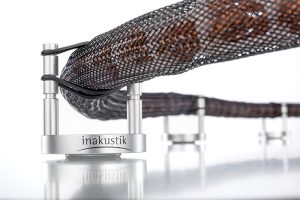



Be the first to comment on: ESP RENAISSANCE Power Cord & RENAISSANCE Power Distributor by Bill Wells